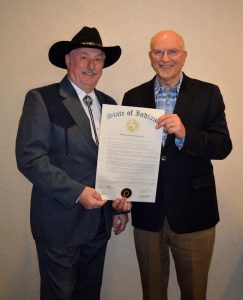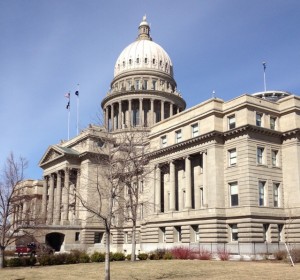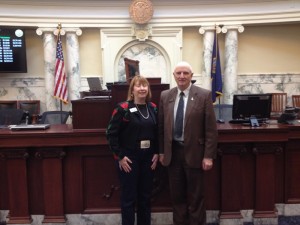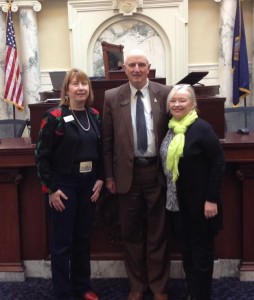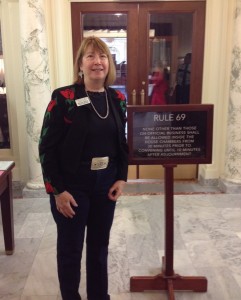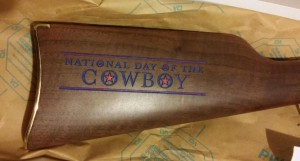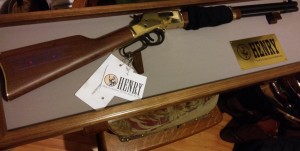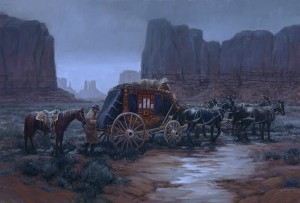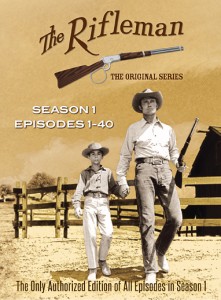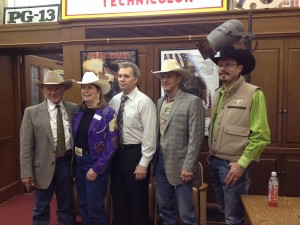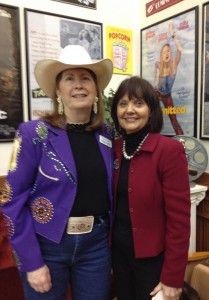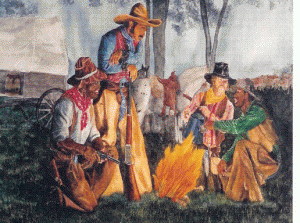
Telling of Legends by Burl Washington
The four individuals selected to receive the 2018 Cowboy Keeper Award© bestowed by the National Day of the Cowboy 501c3 and its Board, are; John Ware (Canada), Cindy Walker (Texas), John L. Sullivan (Arizona and Washington), and Bobby Kerr (Texas). These individuals respresent a broad diversity of achievements, skills, backgrounds, talents, goals, dreams, and impacts. Yet, all of their diversity comes together in the love of cowboy and cowgirl culture, and in their avid devotion to the preservation of a heritage.
John Ware (c. 1845-1905)
John Ware was a remarkable figure in history who helped lay the foundation of the ranching industry in western Canada. Born into slavery (c 1845) near Georgetown, South Carolina, Ware worked his way up to being one of the most well-respected figures in frontier Alberta, thanks to his courage, good nature, physical strength and a penchant for hard work. Ware was an African-American cowboy, renowned for his ability to ride and train horses, and for his role in bringing the first cattle to Southern Alberta Canada, in 1882. His efforts helped create Alberta’s ranching industry, which thrives to this day.
After the Civil War, John left the Carolinas for Texas, where he quickly learned the skills of a rancher and a cowboy. His great stature and dedication to hard work made him a natural and enabled him to get work driving cattle from Texas to Montana and on into the great plains that eventually became Alberta. Upon arriving in Calgary, he found work at the Bar U and Quorn Ranches, before starting his own ranch near the Red Deer River. By 1900, he and his wife, Mildred Lewis, had five children. They moved from the Calgary area to a place northeast of Duchess, Alberta. In 1902 their home was destroyed by a spring flood. He rebuilt on higher ground overlooking the stream now called Ware Creek. As with most folk heroes, there are varied tales about Ware. These are typically about his ability to eat, ride, shoot, and contribute to western culture. It is said that he was never tossed from a wild horse and that it was he who popularized steer wrestling, which went on to become a highlight of the Calgary Stampede. He also pioneered new agricultural techniques and was one of the first ranchers in the area to develop irrigation systems and was an early adopter of dipping cattle in a parasiticide to prevent mange.
Ware is the subject of a biography, John Ware’s Cow Country by J. W. Grant MacEwan, as well as the subject of a fictionalized account of his exploits in “High Rider,” penned by Bill Gallaher. Several geographical features near the Wares’ ranch are named in their honor, including “John Ware Ridge, Mount Ware, and Ware Creek.” Other namesakes include John Ware Junior High School in Calgary, the John Ware Building at Calgary’s SAIT Polytechnic, and the John Ware 4-H Beef Club in Duchess, Alberta. In 1958 the modest log cabin that was the Ware home from 1900 to 1905, was relocated from its prairie setting to the Red Deer River Valley, in Dinosaur Provincial Park.The Ware cabin was restored and re-dedicated in 2002. Alberta musician , Diamond Joe White, released a song entitled “High Rider: The John Ware Story.” In 2006, a fragment of wood from the Ware cabin was contributed to Jowi Taylor’s Six String Nation project. The fragment serves as the top-most element on the pick-guard of the guitar at the heart of the project.
Canada Post issued a commemorative stamp featuring John Ware, to celebrate Black History Month 2012. Ware and his remarkable achievements are also the subject of an upcoming National Film Board of Canada documentary by historian, Cheryl Foggo, John Ware: Reclaimed. Dramatic recreations are being shot on Ware’s former ranch in southern Alberta, with African American rodeo champion, Fred Whitfield, in the title role. Singer-songwriter Corb Lund, along with others, will narrate about Ware’s life. None of John and Mildred’s five children who lived to adulthood had descendants. However, relatives of Mildred Ware still reside in New Jersey and British Columbia. Despite being a master horseman, John Ware was killed in a fall when his horse tripped in a badger hole crushing its rider. His funeral was reported to be one of the largest held in those early days of Calgary. He is buried in Union Cemetery, overlooking the Calgary Stampede Rodeo Grounds.
Ms. Cindy Walker (1918 – 2006)
If you’re familiar with classic songs like, “Dusty Skies, Bubbles in My Beer, Hubbin’ It, When my Blue Moon Turns to Gold Again, Blue Canadian Rockies, Miss Molly, Sugar Moon, You Don’t Know Me, Dream Baby, In the Misty Moonlight, I Don’t Care, Distant Drums, or Cherokee Maiden,” then you know something of the incredible song catalog of the late and legendary Ms. Cindy Walker.
Ms. Walker is an esteemed member of the Texas Country Music Hall of Fame, the Country Music Hall of Fame, the Cowgirl Hall of Fame, the Nashville Songwriters Hall of Fame (first woman inducted) and the Texas Heritage Songwriters Hall of Fame. Bob Wills and His Texas Playboys are known to have recorded 50 or more of Cindy’s songs. She had Top Ten hits spread over five decades. One wonders how many western movies were enriched with Ms. Walker’s music, since her compositions were also cut by Gene Autry, Bing Crosby, Roy Rogers, Al Dexter, Slim Whitman, Eddy Arnold, and Asleep at the Wheel, just to name a few in the cowboy western genre. Other legendary artists such as Ray Charles, George Jones, Webb Pierce, Jim Reeves, Ricky Skaggs, Elvis, Dean Martin, and Roy Orbison, recorded at least one Cindy Walker song. In 2006, American music icon Willie Nelson released an entire album of her songs only.
Ms Walker, born in born Mart, Texas, in 1918, had music in her genes, as her grandfather composed hymns, and her mother, Oree, was an accomplished pianist. Cindy displayed early signs of cowgirl grit, when at 22; she walked into the Crosby building in L.A. to pitch her songs to superstar of the day, Bing Crosby. She talked her way past the receptionist and convinced Larry Crosby to give a listen to her song, “Lone Star Trail.” He invited her to sing it for Bing the next day. Not only did Bing record it, it became a top ten hit for him and secured Cindy her own recording contract with Decca. A strikingly beautiful woman, she also landed a movie deal of her own. Eventually she asked to be released from both contracts, insisting all she wanted was to be a songwriter. You can see her as a singing actress in a video of “Ride Tenderfoot Ride,” performing, “Oh! Oh! Oh!”
Cindy started her songwriting day every day at 5:30 and wrote every day of her life. When she knew she had the lyrics, she would sing them to her momma and momma would play the melody on piano. Once they were finished, they would record the songs on a small reel-to-reel recorder and put them in a bag for Dickie Flatt, the local printer to pick up for the music transcriber, who created the sheet music, which would then be given back to Cindy. Her songs were often characterized as unpretentious, just as she was. “You Don’t Know Me” was such a tender song that even many years later, she cried trying to tell the story of how she came to write it. Once, when asked if it was harder being a female songwriter, she responded, “No, because the artists just wanted a good song. It didn’t matter if a woman wrote it.”
Upon her induction into the Country Music Hall of Fame, renowned Hall of Fame songwriter, Harlan Howard, described Walker as “the greatest living songwriter of country music.” During the ceremony, she read a poem for her late mother, which was acknowledged with a standing ovation. She left the stage in tears after softly blowing a kiss to the guests.
An entire concert was once dedicated to Cindy’s songs at the Monterey Cowboy Gathering. Each year, Mexia, Texas, celebrates “Cindy Walker Days.” Two plays; “You Don’t Know Me, the Cindy Walker Songbook” and “Paper Babies,” have been written in tribute to her life and work. It has been estimated that more than 500 of Walker’s songs have been recorded and that her songs made the top-forty charts (country or pop) more than 400 times. In 2006, she was persuaded to record a CD of her own songs. Ms. Cindy Walker was a beloved and deeply respected legend in her own lifetime.
John Lian Sullivan (1945-2018)
Not many commercial airline pilots go on to become expert wheelwrights and devoted chuck wagon competitors, but John L. Sullivan did. When physical challenges prevented him from flying anymore, he decided it was a good time to learn to farm organic apples. After a suitable amount of research, he launched his orchards in Washington, but soon discovered apples did not afford him the kind of lifestyle he wanted for himself and his family. Coincidentally, once retired, he had also purchased some horses for use in hunting, even though he hadn’t ridden horses much. And, around that same time, he happened to see an ad for a broken down farm wagon, which he decided to buy and renovate with the tools he had just used to build his first log house. You begin to see John Sullivan was the kind of person really drawn to the challenges of learning new things.
John soon crossed paths with Doug Thaemert (former blacksmith at the Museum of the Horse in Patagonia, AZ), an expert on historic wagon restoration, who told him if he was going to fix a wagon or buggy or coach, it was imperative to do it authentically, otherwise it was just a fixed up piece of transportation. So, John bought manuals and he apprenticed himself to skilled craftspeople like Bill Twigg, to learn wheelwright and wagon restoration skills. He even took blacksmithing classes at Eastern Arizona College. Next on his journey, John met some chuck wagon folks at a western festival and soon came home with a “chuck wagon” in need of restoration. His wife, Sandy, wryly notes it was little more than a pile of wood and rusty metal. He soon traveled to the Cowboy Symposium in Lubbock, where he chanced to meet chuck wagon cookie extraordinaire, Wayne Calk, who told John “he couldn’t just stand and watch.” If he was interested, then he needed to step into camp and pitch in. This soon put John and Sandy on the chuck wagon trail, so to speak.
John Sullivan had a zest for learning and trying new things, but he also loved to share his knowledge and pass it on to others, so that history and heritage could be accurately preserved. Sandy Sullivan recalls how John sometimes hitched up one of their wagons and simply drove it up and down the dirt roads of Fort Thomas, Arizona, answering questions about it and sharing his knowledge of its history. Sometimes he would drive a covered wagon to a school just to talk to the students about the Oregon Trail. At their Arizona home, John and Sandy built a replica wagon shed where they could work on stagecoaches, horse drawn wagons, buggies, and wheels. John’s love of teaching caused him to burn the biscuits more than once, because he had this passion for preservation, so he would start talking about an artifact, or a type of wagon, or skill, and forget he had biscuits baking over hot coals in the Dutch oven. Although he was over 50 when he discovered a love for these wagons, he became dedicated to the telling and re-telling of their important role in helping settle new territory, and he worked to share his knowledge by educating the public, especially young people, about that history. A few years back, John started the “Hoorah” tradition of the American Chuckwagon Association in which they come together each year to share recipes, and swap stories around the campfire, passing important historic details on to each other, while holding a tin cup of steaming hot coffee just as the sun is rising.
Bobby Kerr
Legendary horse trainer, Bobby Kerr, resides in Hico, Texas, but grew up in Ontario, Canada. Jan Bishop, of the Canadian 4Bs Wild West Show, recalls Bobby rode his first horses at Tom Bishop’s place in Ridgeville, Ontario, and that Bobby attributes his love of Wild West Shows to his time spent at the Bishop’s as a youngster. Kerr has been riding and training horses for over 45 years. His skill with horses, especially Mustangs, is uncontested. He has trained and shown Reining, Roping, Working Cow Horse and Cutting. It was 2010 when he first attended Mustang Makeover and the following year, decided to enter the competition. He won Fan Favorite that year, and the next year, he was the Champion Trainer. The following year, he was named the 2012 Supreme Extreme Mustang Makeover Champion and Fan Favorite in the Legends Division on Maypop. The Mustang Makeover competition gives trainers 100 to 120 days to tame a wild mustang.
A man with a passion for horses, Bobby is a talented competitor in a variety of equine disciplines and he travels the country, sharing his equine knowledge while showcasing the talents of rescued mustangs. Kerr partners with the Bureau of Land Management through their mustang adoption program. His mega presence on YouTube is partly due to his showing in Mustang Million and to his regular role on the Nat Geo WILD show, Mustang Millionaire. If you’ve never watched a video of Kerr on a Mustang he has trained, it is truly extraordinary to witness. His long string of awards begins with his first title in 1985 when he won the AQHA Senior Cutting Honor Roll Champion, followed by a 1993 Futurity Limited Open Finalist finish. 2013 saw Bobby winning the IPRA National Finals Rodeo Showcase Champion, in he was the 2016 winner of the NFR Specialty Act and in 2017 PRCA Dress Act of the Year. In 2001, Kerr founded the Texas Cowboy Hall of Fame (TCHF), located in the Historic Stockyards in Fort Worth, Texas. (TCHF is a 2009 Cowboy Keeper Award Recipient). It’s no wonder Cinch calls Bobby Kerr a “cowboy’s cowboy.”
Texas artist, Burl Washington, graciously contributed the artwork for this year’s Cowboy Keeper Award with his iconic painting of friendly cowboys gathered around a campfire, in “Telling of Legends.”
The National Day of the Cowboy tips its hat to John Ware, Ms. Cindy Walker, John L. Sullivan and Bobby Kerr, as four remarkable individuals who have made a significant contribution to the preservation of cowboy culture and pioneer heritage. It is an honor to share their extraordinary stories.

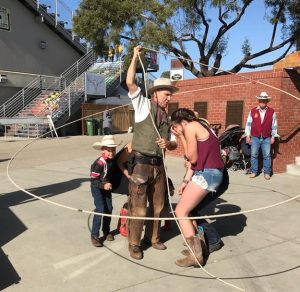
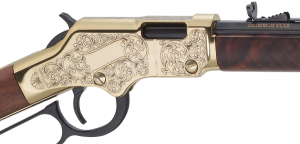 y to own a uniquely inscribed Henry Golden Boy rifle with a one-of-a-kind engraved receiver cover. We’ve teamed up with Henry to create this one, very special, commemorative NDOC rifle that is sure to be treasured forever by the person fortunate enough to own it. We think It makes a perfect gift for a birthday, retirement, graduations, Father’s Day, Mother’s Day, military service, or just about any other special occasion. Of course, it also makes a magical gift to honor someone on the National Day of the Cowboy, And, while It will indeed make a unique gift for a friend or family member, you could also simply treat yourself and hang on to it if you’re the lucky winner.
y to own a uniquely inscribed Henry Golden Boy rifle with a one-of-a-kind engraved receiver cover. We’ve teamed up with Henry to create this one, very special, commemorative NDOC rifle that is sure to be treasured forever by the person fortunate enough to own it. We think It makes a perfect gift for a birthday, retirement, graduations, Father’s Day, Mother’s Day, military service, or just about any other special occasion. Of course, it also makes a magical gift to honor someone on the National Day of the Cowboy, And, while It will indeed make a unique gift for a friend or family member, you could also simply treat yourself and hang on to it if you’re the lucky winner.
